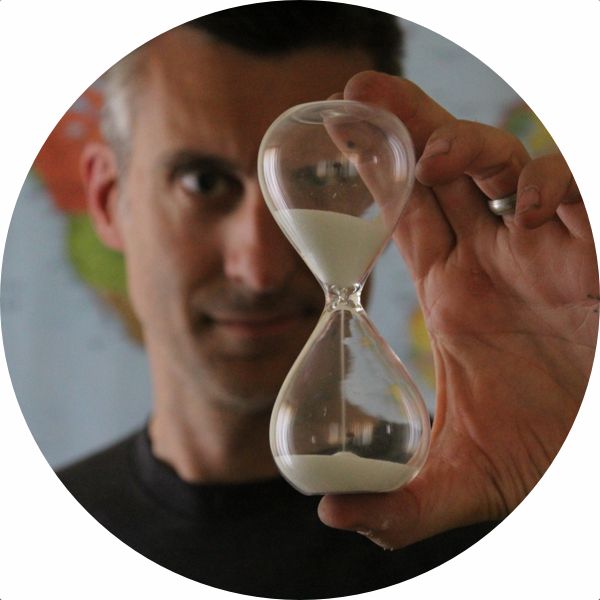Wednesday, 17-12-2014. Day 119.
Big wild geese, street markets, and dumplings.
Our day started as it usually does, with a free hotel breakfast. But, as I mentioned yesterday, this free breakfast was a little disappointing. And this morning there were a few smokers in the place, so that made the whole affair a little unpleasant.
After breakfast we checked out of the hotel, loaded our bags into the tour van, and headed off to the Big Wild Goose Pagoda.
Big Wild Goose Pagoda
Yes, that's a funny name. It comes from a legend in India, where hungry Buddhist monks (who still ate meat back then) asked Bodhisattva for some meat. Just then, as a flock of wild geese flew overhead, the lead goose broke its wings and crashed to the ground. The horrified monks built a temple on that spot and stopped eating meat.
So this pagoda in Xi’an is designed in the style of and named after the legendary one in India. There’s also another similar pagoda in Xi’an that's called the Small Goose Pagoda because, as you may guess, it’s smaller.
Chris handed us off to another guide, a rather jovial fellow by the name of Patrick, who would lead us on a tour of the Daci’en Temple grounds, the area surrounding the Big Wild Goose Pagoda.
We learned that the Big Wild Goose Pagoda was originally built in 652 as a repository for all the statues, sutras, and other Buddhist-related relics collected by the wandering monk Xuanzang (who Patrick told us was a mighty good looking man).
And because the mighty good-looking Xuanzang journeyed to India along the fabled Silk Road (a tale recounted in the classic of Chinese literature, Journey to the West), this pagoda is considered to be part of the Silk Roads: The Routes Network of Chang'an-Tianshan Corridor UNESCO World Heritage site, which we didn’t know going in (nor did Patrick tell us, which seemed like a missed opportunity).
But Patrick did hit us with a lot of information about Buddhism, the life of Xuanzang, life of the monks at the temple, and even told us the whole story of Siddhartha as displayed in an extensive wall screen made from inlaid, colored jade. The craftsmanship here was really impressive.
The area is an active temple, and there are a number of statues and temples people visit and pray to everyday, including Buddha (naturally) and Caishen, the Chinese god of wealth. In addition to a large statue of Caishen, his temple is filled with small, golden figurines of the wealth god set in alcoves along the walls.
Buddha and his two closest disciples.
Caishen, the god of wealth. Patrick told us many wealthy people come here to pray.
As we left Caishen’s temple, many people were lined up waiting to pray to him. Wealth seems to be popular in China.
We were given the opportunity to climb the seven-storied pagoda (for an additional $30 U.S.), but we passed. It was quite cold that day, and certain members of our group weren’t up for climbing the 60 or so meters of vertical, winding steps to get to the top.
As the tour ended, Patrick took us inside one of the buildings and showed us some traditional Chinese calligraphy and explained a little bit about about the origins and meanings of some of the more common characters, and why it was important to stamp your calligraphy or artwork with your personal stamp (so people would know it was authentic, of course).
Then Patrick made an appeal for us to buy something. This room was filled with many different pieces of art donated to the temple by artists, some of whom were quite famous in China, apparently. There was also a man who would carve your name on a stamp in under 10 minutes (for a fee).
We politely declined, thanked Patrick, and left the Big Wild Goose Pagoda behind. Outside, we re-connected with Chris and started off to tour the Muslim Quarter.
Muslim Quarter
When we first saw that the Muslim Quarter was on our agenda, we were sort of lukewarm on it. Because this was a pre-arranged package tour, we’d been taken to many places that were sort of interesting but we really could have skipped. On paper, the Muslim Quarter felt like another one of those, but, as it turns out, it was pretty great.
When they said Muslim Quarter, what they really meant was Beiyuanmen Muslim Market, a 500-meter section of street filled with food and souvenir vendors selling all sorts of goodies like ginger candy, Chinese hamburgers, salted nuts, barbecued meats, hot pomegranate juice (which warmed us up on this chilly day), and much more. Most, if not all, of the vendors along this section of town are Muslim.
Flat bread baked with hot stones.
Making ginger candy.
The weather in Xi’an was very cold that day, much colder than it had been the day before, so we didn’t spend too long in the market before moving on to check out the city’s two towers, the Drum Tower (which is right at one end of the Muslim Quarter) and the Bell Tower (which is a short distance away).
Xi'an Drum Tower.
Xi'an Bell Tower.
The bell used to ring at 6:00 in the morning to signify the opening of the city gates, and the drum would sound at 6:00 in the evening to announce the closing of the city gates. We didn’t get to go into the two towers at all, which we would have liked to do, but we were approached by a nice lady who wanted to have her picture taken with Frankie & Jackie.
When lunchtime rolled around, instead of going to the pre-arranged restaurant, Chris found out we liked dumplings, so she mentioned Defachang, a very famous Chinese dumpling place. She said we could eat there with one caveat — it would be over our per-person meal allowance, so we’d have to make up the difference. We agreed, of course. I mean, we’re talking about dumplings here.
And it was pretty good (they had rabbit-shaped dumplings with rabbit inside), and we sampled quite a few different kinds of dumplings, but it was no Din Tai Fung.
After lunch, it was off to the airport so we could catch our next plane (our 20th) to Shanghai. It would be our last China Eastern flight, and we were surprised that it was on time.
We landed in Shanghai about 7:00 p.m. and were met at the airport by Candy, our third Chinese guide, who took us to our hotel, helped us get checked in, and told us she’d meet us in the lobby at 9:00 a.m. the next day for a tour of Shanghai.
Notable Statistics
UNESCO World Heritage Sites Visited: 1 (15 cumulative)
Photos with strangers: 1
Dumplings eaten: Many
Planes: 1

Tom Fassbender is a writer of things with a strong adventurous streak. He also drinks coffee.

















